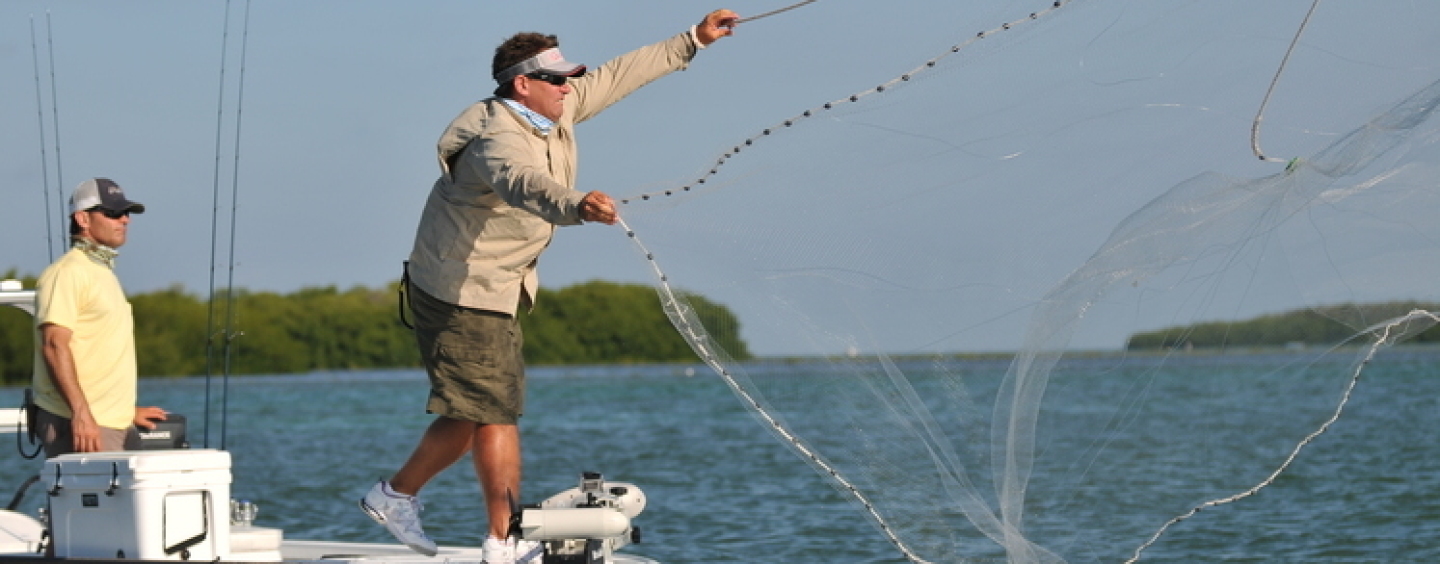**IMPORTANT NOTE AT THE END OF THE ARTICLE**
The term ‘banana prawn’ refers to two species: the white- and the red-legged banana prawns. Both species live in our local waters and are short-lived and fast growing. When banana prawns run in South East Queensland, it is a common sight to see many boats grouped together, casting nets, and hauling in an abundance of prawns.
Prawning can be attempted in a few different ways. However, for our local waters, it is suggested to use a cast net from a boat. The technique is easy to learn and is a fairly inexpensive fun for the whole family.
Here are the things you need to know.
NET
The best type of net to catch banana prawns is a monofiliment top pocket cast net, with 12ft drop and chain bottom. The prices for these nets start from $250, and can range up to $550.
WHEN
The best time of the year to catch prawns is between January and May. Prawn catching during the day is safer, with less chances of nasty by-catch, such as stonefish or bullrout.
Some areas prove better for prawn catching on the high tide and others during the lower tides. The best time is usually an hour before or after the changing tides, as otherwise the current can be too strong to catch anything.
The depth varies from place to place. It can be as shallow as 6 feet, but it will be hard to make the nets effective. And it can go far down to 60 feet deep. Prawns move into deeper holes on low tide, as there is no water over the banks and over shallow areas at the bottom of each tide.
Water temperature is not a major factor during the prawn season.
WHERE
The best locations to catch banana prawns are from the Jacobs Well boat moorings to the Rudy Maas moorings, then north from the power lines at Rocky Point to the mouth of the Logan River. The areas of Redland Bay Channel, Karragarra Island, Lamb and Russell Island are also great locations for prawns.
Hunting for prawns is very popular in these waters. The prawning pack can be as little as one boat, if you are lucky enough to find them on your own, or up to 100 boats all throwing nets.
If you are a learner, the best way to catch prawns is by watching from a distance. Then, observe how the seasoned prawners work the area. Most prawners are easy to get along with, as they are all trying to catch a feed. Most times, you are working in close quarters with each other. Be aware of other’s boats and motors, as mistakes can be expensive.
LIMITS
Possession limit is 1 x 10-litre bucket of prawns per person at any time. This includes what you have in your boat, car, fridge and freezer at home at any given point in time. Certain areas of Moreton Bay have a green zone marine park status, so it is wise to acquaint yourself online of these important zones before heading off.
HOW
By using a fish finder, you will greatly improve your success rate. Any type of sounder will mark to locate prawns. It takes practice to know what they look like on your individual personal units. The prawns will show up anywhere from the surface right down to the bottom. Once located, be ready to cast your net using your preferred method (off the shoulder, wrist-grab, or other methods). Mastering your net cast prior to your fishing trip is essential to maximise the opportunity for a productive cast. (Ask your tackle shop to demonstrate, or go to youtube.com for details.)
Once you catch the prawns, place them in an ice-slurry mixture (ice and salt water) in a cooler to keep them fresh. They can also be kept alive in a live bait well/tank with lots of water flow. However, ensure the lid is closed at all times, as prawns are able to jump and escape.
COOKING
In a pot, place salt water that comes from the area where the prawns were caught. Allow the water to boil before adding the raw prawns. Once they are red and begin to float, remove them from the pot and immediately place in an ice-water slurry to stop any further cooking. Overcooked prawns can be quite tough and chewy.
AS BAIT
Prawns make excellent bait, if you are not intending on eating them. Almost all fish will eat/attack live prawn bait. It simply depends on the size of the prawn. Smaller prawns are best for whiting and bream, while larger prawns produce better results for flathead, trevally, mangrove jack, mulloway (jewfish), and threadfin salmon.
To rig a live prawn for fishing, place the hook in the second to last segment before the tail. This will allow the prawn to swim in a more natural manner, while also increasing the length of time with which it stays alive.
By Luke Rafton
**The Queensland government have issued statements regarding the recent “white spot disease” found in prawns in the Logan River and Moreton Bay. The disease is not known to be harmful to humans, but it is strongly advised to cook the prawns before consumption.
For up-to-date information, follow the link below.
https://www.daf.qld.gov.au/animal-industries/animal-health-and-diseases/a-z-list/white-spot-disease



























